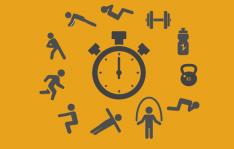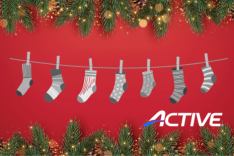You've spent months training for race day--prepping the body for 140.6 miles of swim, bike and run. You've juggled schedules, survived "impossible" workouts, eaten the right things, and kept your gear in pristine condition. You've got it all figured out, except for one thing.
The special needs bag.
Yes, you heard that right. IRONMAN is a sport made up of three sports and five bags. In addition to the "morning clothes" bag (sometimes called the "dry clothes bag, where you put the clothes you wore in the morning/what you'll want to wear after the race), and two gear bags (bike gear and run gear), you're also given two bags for "special needs." These are optional bags you'll have the option to pick up approximately halfway through the bike and run.
More: Get More Bang for Your Long Ride Buck
Some beginner athletes get intimidated by these bags...at least I know I did. But packing them doesn't have to be stressful or confusing. Learn from the below list of the most common types of "baggers," and glean tips on how to determine your own special needs style.
The Pharmacist
This bagging style is Alice and Wonderland meets triathlon. The Pharmacist is looking for an easy remedy for whatever may be ailing her. If things are aching and sore, she'll be reaching for the pain reliever. If she needs some pep in her pedals, it's a caffeinated gel. If the problem is more topical, she'll have that covered too--Band-Aids of all sizes, sunscreen and eye drops will be within arm's reach.
Best practice: Try to pack only what you need, based on your experience in training. If you're prone to blisters, stick some Band-Aids in. Avoid packing things that sound good in the heat of the moment (when every worst case scenario is likely to scare the bejesus out of you), and never pack anything that you haven't tried during training. Also, remember that there will be medical tents and volunteers to help you out.
More: Ask A Coach: Are Power Meters Worth It?
The Hoarder
"Just in case," is the motto of this bagger, who is likely to put everything but the kitchen sink into his special needs bag. (Actually, if he could get a sink in there, he'd probably include that too--with a bar of soap and a toothbrush). The Hoarder will include everything from a picture of his kids (for inspiration) to several pairs of socks (different colors and weights, you never know WHAT you might need), to a potpourri of chapstick, snacks, arm warmers and electrical tape.
Best practice: Again, less is more when it comes to special needs. Remember, you're in the middle of a race when you get to this bag, so make sure it's easy to get in and out of without having to waste time rummaging through things.
The Procrastinator
Some athletes forget all about the special needs bags until they pick them up at registration. It's understandable--with so much to manage leading up to race day, what you might need after 56 miles of biking isn't necessarily top of mind. This bagger is likely to hit the expo tent hard, cobbling together an assortment of products to give her peace of mind. She'll spend a fortune on energy gels and gear she'll never use, but at least she'll feel satisfied that she has something for those bags.
Best practice: Once you arrive at the race venue, you'll be limited to what's available. Expos and local gear shops may be picked over and sold out of many items, and may not have the specific products or brands you're looking for. Try to put a bag together from items you've brought along with you, or sourcing items you know you can trust. Shops in neighboring towns may have more options if you can't find what you're looking for locally, or you can ask fellow athletes for any "extras" they might donate. Triathletes are a friendly bunch.
More: Making a Smooth Transition from Half Distance Racing to Full
The Purist
This athlete wants to avoid the special needs area all together so he can maintain race pace and hit his performance goals. The Purist has trained so precisely, he's confident he can meet all his needs on the course through regular aid stations and energy management. He's more likely to use his special needs bag to tote his finisher gear home than for items he might need on the course.
Best practice: Even though you're sure you'll be self-sufficient during the race, it doesn't hurt to toss a couple "might need" items into the bags and slap your number on it anyway. Best-case scenario? You cruise right past it like it doesn't exist. Worst-case scenario? You trade a few seconds for a dry pair of socks.
No matter what you decide to do with your special needs bags, it's best to think about them before you get to the race and try to incorporate them into your training. On long rides or runs, take a moment to see how you're feeling at the halfway point. Do you feel like there's something you could use after 56 miles on the bike or 13 miles of running? Keep a log of how you feel at these points during training and use it to inform what you'll pack for the big day.
Lisa Dolbear is a three-time IRONMAN finisher, triathlon coach, marketing specialist and mother of two.
About the Author









Discuss This Article